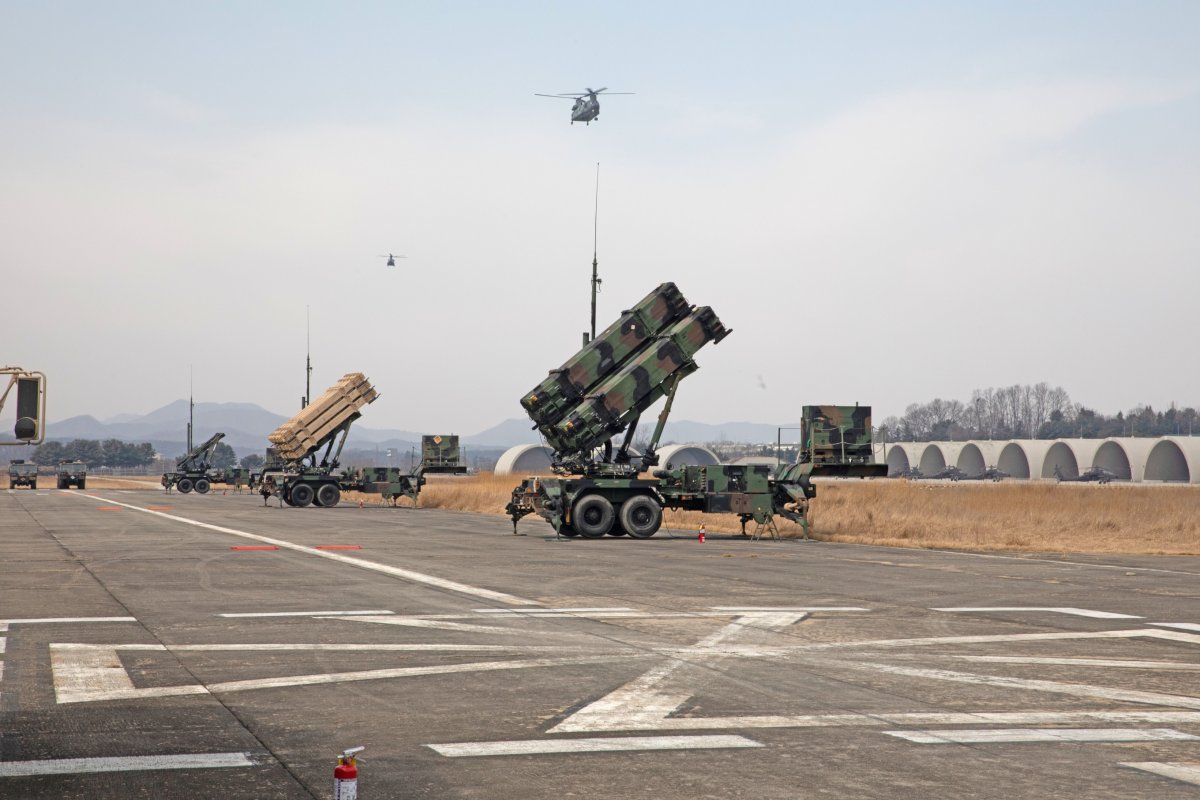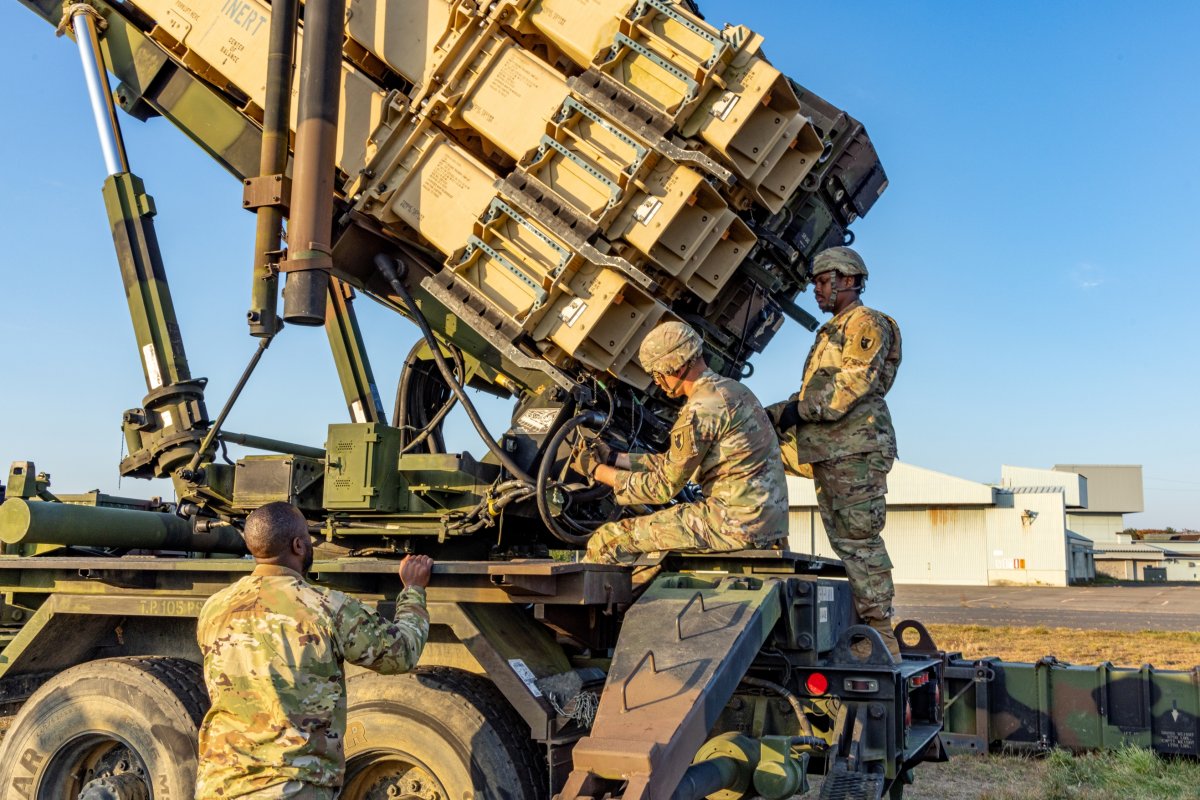U.S. Patriot air defense units stationed in Northeast Asia likely learned valuable lessons from their recent combat experience in the Middle East as they prepare for potential aggression from China and North Korea.
Iran’s missile strikes on U.S. military positions at Al Udeid Air Base in Qatar—retaliation for the earlier American bombing of its nuclear facilities—triggered an unprecedented air defense operation on the ground, according to U.S. military leaders who later revealed that Patriot units had been redeployed from Japan and South Korea.
The Pentagon did not respond to Newsweek’s request for comment. China‘s Defense Ministry and North Korea‘s embassy in Beijing also did not respond.
Why It Matters
Both Japan and South Korea face a growing missile threat from North Korea, while China has steadily expanded its long-range missile arsenal—capable of striking U.S. military bases across Japan. The U.S. has stationed approximately 55,000 troops in Japan and another 28,500 in South Korea, all tasked with defending America’s allies in regional contingencies.
Among the American forces stationed in Northeast Asia are two Patriot missile units—the U.S. Army’s 38th Air Defense Artillery Brigade in Japan and its 35th Air Defense Artillery Brigade in South Korea. The air defense system, which gained fame during the Gulf War in the 1990s, can intercept tactical ballistic missiles, cruise missiles, aircraft and drones.

United States Army’s Patriot missile launchers assigned to 35th Air Defense Artillery Brigade rest in a stand-by position during training in South Korea on March 18, 2023.
United States Army’s Patriot missile launchers assigned to 35th Air Defense Artillery Brigade rest in a stand-by position during training in South Korea on March 18, 2023.
U.S. 8th Army
What To Know
The Army’s Air Defense Artillery branch, along with the U.S. Navy’s destroyers, will enhance their ability to intercept a range of threats thanks to their operations in the Middle East, said Timothy Walton, a senior researcher at the Hudson Institute who specializes in air and missile defense.
Prior to Iran‘s June 23 attack on the Al Udeid base, all personnel were evacuated except for 44 soldiers who remained to operate two Patriot batteries, according to General Dan Caine, chairman of the Joint Chiefs of Staff. They launched “a bunch” of interceptor missiles to defend the base alongside Qatari Patriot crews, Caine told reporters the following week—the precise number launched is classified.
In a July 21 analysis, researchers at the Jewish Institute for National Security of America said that the Army had launched approximately 30 Patriot guided missiles at 14 Iranian ballistic targets heading toward America’s largest military facility in the Middle East, at a total cost of $111 million.
One Patriot missile battery consists of a power plant, radar, control station, launchers, an antenna mast group, and interceptor missiles, according to the Congressional Research Service. Each launcher can accommodate either four or 16 interceptor missiles, depending on munition type.
“Iran’s missile attack on Al Udeid Air Base drew a considerable amount of coverage, but less heralded have been other U.S. Army units defending critical assets in Israel and longstanding operations countering rockets and drones in Iraq and Syria,” Walton told Newsweek.

United States Army soldiers assigned to the 38th Air Defense Artillery Brigade conduct reload operations on their Patriot air defense system at Misawa Air Base in Japan on October 29, 2024.
United States Army soldiers assigned to the 38th Air Defense Artillery Brigade conduct reload operations on their Patriot air defense system at Misawa Air Base in Japan on October 29, 2024.
Staff Sgt. Connor Davis/U.S. Army
In addition to the Patriot system, the Army has also deployed the Terminal High Altitude Area Defense, or THAAD, system to Israel to boost its air defenses amid long-range missiles threats from Iran and Yemen’s Houthi rebels.
At least two THAAD units are currently deployed in the Western Pacific—one in Guam, the U.S.’s westernmost territory, and another in South Korea—providing air defense for the U.S. homeland and for its allies against ballistic missile threats from China and North Korea.
What People Are Saying
Timothy Walton, a senior fellow at the Hudson Institute, told Newsweek: “In response to the high demand for air and missile defense units, the U.S. Army plans to grow its force of Patriot batteries and add new Indirect Fire Protection Capability and other counter-air sensors and effectors to its force.”
General Dan Caine, chairman of the Joint Chiefs of Staff, at a news conference on June 26: “We believe that this is the largest single Patriot engagement in U.S. military history. […] This really demonstrates the combat capability and capacity of our Army air defenders.”
What Happens Next
The U.S. will need to replenish its stockpile of Patriot interceptor missiles following operations in the Middle East and after the delivery of air defense systems to Ukraine.

Sgt. Raquel Birk/Photo-illustration by Newsweek/Getty/Canva/US Army
